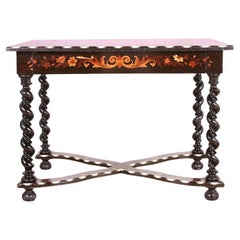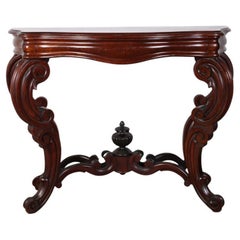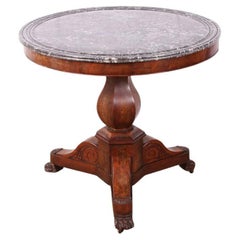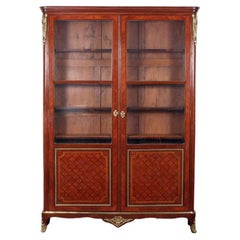Want more images or videos?
Request additional images or videos from the seller
1 of 6
19th Century Stereoscope with Slides
$4,550List Price
About the Item
- Dimensions:Height: 17 in (43.18 cm)Width: 10.5 in (26.67 cm)Depth: 10.75 in (27.31 cm)
- Materials and Techniques:
- Place of Origin:
- Period:
- Date of Manufacture:1880
- Condition:Wear consistent with age and use.
- Seller Location:Vancouver, CA
- Reference Number:Seller: FI-17761stDibs: LU1386216912331
About the Seller
4.9
Vetted Professional Seller
Every seller passes strict standards for authenticity and reliability
Established in 1989
1stDibs seller since 2015
241 sales on 1stDibs
Authenticity Guarantee
In the unlikely event there’s an issue with an item’s authenticity, contact us within 1 year for a full refund. DetailsMoney-Back Guarantee
If your item is not as described, is damaged in transit, or does not arrive, contact us within 7 days for a full refund. Details24-Hour Cancellation
You have a 24-hour grace period in which to reconsider your purchase, with no questions asked.Vetted Professional Sellers
Our world-class sellers must adhere to strict standards for service and quality, maintaining the integrity of our listings.Price-Match Guarantee
If you find that a seller listed the same item for a lower price elsewhere, we’ll match it.Trusted Global Delivery
Our best-in-class carrier network provides specialized shipping options worldwide, including custom delivery.You May Also Like
19th Century R. & J. Beck Stereoscope
By R.&J. Beck 1
Located in Norwood, NJ
Museum quality tabletop Stereoscope by British maker R. & J. Beck London. It is fitted with with adjustable rack and pinion focusing and elevation adjustment for ease of viewing. Eac...
Category
Antique Late 19th Century English Victorian Historical Memorabilia
Materials
Brass
Dutch 19th Century gold sliding pencil
Located in Delft, NL
Dutch 19th Century gold sliding pencil
A Dutch gold pencil holder in a ribbed motif with a sliding system. These pencil holders are usually made as...
Category
Antique 19th Century Dutch Collectible Jewelry
Materials
Gold
Rare 19th Century English Tunbridgeware Hair Pin or Slide
Located in Dallas, TX
PRESENTING an EXTREMELY UNIQUE and RARE 19C British Tunbridgeware Hair Pin/Bobbin or Slide.
This slide is unlike any of it’s kind we have seen before, it is a VERY RARE survivor.
From circa 1860 – 80 and made in Tunbridge Wells, England.
Made of walnut with gorgeous marquetry inlay on the entirety of the front with classic Tunbridgeware micro-mosaic all over the front. The rear is walnut.
The marquetry inlay appears to be various different woods, namely, maple, walnut and satinwood.
Would have been worn in a Lady’s hair bun with the micro-mosaic facing forward.
This would have belonged to a VERY ELEGANT LADY in the mid to late 19th Century.
Tunbridge ware is a form of decoratively inlaid woodwork, typically in the form of boxes, that is characteristic of Tonbridge and the spa town of Royal Tunbridge Wells in Kent in the 18th and 19th centuries. The decoration typically consists of a mosaic of many very small pieces of different coloured woods that form a pictorial vignette. Shaped rods and slivers of wood were first carefully glued together, then cut into many thin slices of identical pictorial veneer with a fine saw. Elaborately striped and feathered bandings for framing were pre-formed in a similar fashion.
There is a collection of Tunbridge ware in the Tunbridge Wells Museum and Art Gallery in Tunbridge Wells.
The famous makers of Tunbridge ware were in the Tunbridge Wells area of Kent; their most notable work was from circa 1830-1900.
Early makers of Tunbridge ware, in Tunbridge Wells in the mid-18th century, were the Burrows family, and Fenner and Co. In the 19th century, around 1830, James Burrows invented a technique of creating mosaics from wooden tesserae. Henry Hollamby, apprenticed to the Burrows family, set up on his own in 1842 and became an important manufacturer of Tunbridge ware, employing about 40 people.
Edmund Nye (1797–1863) and his father took over the Fenner company when William Fenner retired in 1840, after 30 years in partnership with him. Thomas Barton (1819–1903), previously apprenticed at the Wise factory, joined the Nyes in 1836, and worked as Nye’s designer; he took over the business in 1863 and continued there until his death.
In Tonbridge (near to Tunbridge Wells), George Wise (1703–1779) is known to have had a business in 1746. It continued with his son Thomas, and Thomas’s nephew George (1779–1869), who took over in 1806. In its early years the company made articles such as workboxes and tea caddies with prints of popular views; later items had pictures created from mosaics. Their workshop in Tonbridge, Wise’s Tunbridge Ware Manufactory, was next to the Big Bridge over the Medway; the building was demolished in 1886 to widen the approach to the bridge.
Tunbridge ware became popular with visitors to the spa town of Tunbridge Wells, who bought them as souvenirs and gifts. Articles included cribbage boards, paperweights, writing slopes, snuffboxes and glove boxes.
At the Great Exhibition of 1851, Tunbridge ware by Edmund Nye, Robert Russell and Henry Hollamby was shown; Edmund Nye received a commendation from the judges for his work. He exhibited a table depicting a mosaic of a ship at sea; 110,800 tesserae were used in making the picture.
The manufacturers of Tunbridge ware were cottage industries, and they were no more than nine in Tunbridge Wells and one in Tonbridge. The number declined in the 1880s; competent craftsmen were hard to find, and public tastes changed. After the death of Thomas Barton in 1903 the only surviving firm was Boyce, Brown and Kemp, which closed in 1927.
Marquetry was an old technique which was continued by Nye and Barton to create images such as birds or butterflies.
‘Green Oak’ as caused by the fungus Chlorociboria aeruginascens.
Stickware and half-square mosaic was invented by James Burrows in about 1830: a bunch of wooden sticks of different colours, each having triangular or diamond-shaped cross section, were tightly glued together; in the case of stickware, the resulting block was dried, then turned to form an article such as the base of a pincushion. For half-square mosaic, thin slices were taken from the composite block, and applied to a surface.
Tesselated mosaic, was a development by James Burrows of half-square mosaic; it was adopted by George Wise and Edmund Nye. Minute tesserae were used to form a wide variety of geometric and pictorial designs.
Many sorts of wood were used for the various colours; about 40 were in regular use. Only natural colors were used; green was provided by “green oak”, produced by the action of fungus on fallen oak. Designs for articles were often taken from designs of Berlin wool work.
Category
Antique Late 19th Century English High Victorian Collectible Jewelry
Materials
Satinwood, Walnut
American Victorian Metal Stereoscope
Located in Queens, NY
2 American Victorian-style wood and etched metal stereoscope.(PRICED EACH)
Category
Antique Late 19th Century American Victorian Scientific Instruments
Materials
Metal
American Victorian Stereoscope Photographs
Located in Queens, NY
American Victorian-style collection of stereoscope photographs. (100 available)
Category
Antique Late 19th Century American Victorian Scientific Instruments
Materials
Paper
Antique Painting with Barometer 19th Century
Located in Madrid, ES
Antique table with barometer
Interesting 19th century painting painted in oil with meteorological reasons on wood and which has a barometer in the center and a thermometer in the up...
Category
Antique 1890s Scientific Instruments
Materials
Fruitwood
Cupid with boar. Glass. 19th century.
Located in Madrid, ES
Cupid with boar. Glass. 19th century.
Glass cameo depicting a cherub or cupid accompanied by a boar, modelled on an amethyst from the Thomas Dundass Collection, reproduced in an eng...
Category
Antique 19th Century Italian Neoclassical Revival Historical Memorabilia
Materials
Glass
2 Crosses with Micromosaic – Rome, 19th Century
Located in Madrid, ES
"2 Crosses with Micromosaic – Rome, 19th Century"
Dimensions: 5 x 3 cm and 4 x 3 cm
A delicate pair of Roman micromosaic crosses, dating from the 19th century. Each cross is decorat...
Category
Antique 19th Century Italian Other Religious Items
Materials
Metal
Little 19th Century Notebook with Pencil
Located in Casteren, Noord-Brabant
A small antique notebook. At the front cover is a hand painted medallion depicting the Palais Bourse building, the Paris stock exchange. Surrounded wi...
Category
Antique 1880s French Napoleon III Books
Materials
Fabric, Paper
19th Century Shield
Located in Cheshire, GB
19th Century oak Heraldic Shield With Carved Shell Work.
Dimensions
Height 18 Inches
Width 13.5 Inches
Depth 1.5 Inches.
Category
Antique Late 19th Century British Arms, Armor and Weapons
Materials
Oak
More From This Seller
View All19th Century Italian Ebonised Desk
Located in Vancouver, British Columbia
Early 19th century Italian ebonized desk with exceptional marquetry work and bone inlay.
Dimensions:
W: 39″
D: 26.5″
H: 28.5″
Category
Antique Early 19th Century Italian Desks and Writing Tables
Materials
Bone, Wood
19th Century French Mahogany Console
Located in Vancouver, British Columbia
Beautiful solid Mahogany and veneered Louis Phillippe console from Paris. C.1880. Intricately carved base.
Category
Antique Late 19th Century French Louis Philippe Console Tables
Materials
Wood
Early 19th Century Mahogany Gueridon
Located in Vancouver, British Columbia
Louis Philippe mahogany gueridon / center table. The marble top is white & grey with a triple beveled edge. Standing on a flamed mahogany pedes, with curved carved legs and claw feet...
Category
Antique 1820s French Gueridon
Materials
Marble
Exceptional 19th Century French Bookcase
Located in Vancouver, British Columbia
19th Century French Louis XVI style bookcase. Exquisite marquetry in rosewood and kingwood. Adorned with original gilt br...
Category
Antique Mid-19th Century French Bookcases
Materials
Bronze
French 19th Century Mahogany Bookcase
Located in Vancouver, British Columbia
Exceptional, 19th Century French Bookcase in Plum Pudding Mahogany. The tall upper body has 3 glazed doors that showcase a storage cavity that is outfitted with four adjustable shelv...
Category
Antique Mid-19th Century French Bookcases
Materials
Mahogany
19th Century French Giltwood Mirror
Located in Vancouver, British Columbia
A late 19th century giltwood mirror of fine quality and proportions. The beveled mirror is set within a hand carved, moulded giltwood frame with beaded row borders around. Surmounted...
Category
Antique Late 19th Century French Wall Mirrors
Materials
Giltwood
Recently Viewed
View AllMore Ways To Browse
Antique Stereoscope
Vintage Christmas Ornament
Mercury Glass Ornaments
Antique German Christmas
Mid Century Christmas Tree
German Antique Ornaments
German Glass Christmas Ornaments
Blown Glass Christmas
Masonic Furniture
Antique Coffe Grinder
Antique Coffee Grinder
Artillery Shell
Historical Signatures
Used Artillery Shell
Oak Leaf Motif
Vintage German Glass Ornaments
Cash Registers Used
German Christmas Tree



